
The Adventures of Robin Hood – 1938
This was a fun movie. It had great characters, a great cast of actors, incredible and energetic action sequences and exciting music. But all that being said, I can also say that the whole movie is pure camp. It was utterly unrealistic and at times laughable. It was outrageous and over-the-top. And I loved every minute of it.
Errol Flynn led the cast as Sir Robin of Locksley. He, like every other character in the film, was a total stereotype. He was a flawless person and how could our hero be anything less? He was handsome, clever, chivalrous, heroic, altruistic, steadfast, brave, an expert sword fighter, a master of archery and smooth with the ladies. He was larger than life. But for me, that was his downfall. He was so utterly perfect, he was not a believable character.
And then there was the rest of the cast. Robin’s main squeeze, Maid Marion, was played by Olivia DeHavilland. She was beautiful, virtuous, smart, loyal, brave, daring and lovely beyond description. Prince John, played by Claude Rains, was vain, demanding, treacherous, greedy, conniving, devious and spiteful. Sir Guy of Gisbourne, played by Basil Rathbone, was short-tempered, vindictive, manipulative, self-serving and dangerous. Friar Tuck, played by Eugene Pallette, was generous, jolly, loyal, bold and true. You start to get the picture.
People like that don’t exist in the real world. Everyone has both good and bad qualities. It is what makes us all human. But I know why they did it. The directors, Michael Curtiz and William Keighley were not trying to make a serious drama. They were making a light-hearted adventure film, and the actors all did a fine job playing out their parts, such as they were.
But when I think about it, the biggest reason I have to call the movie campy was the costumes. But again, I know why they did it. This film was in Technicolor, and as the techniques of this new medium were being pioneered, filmmakers took every opportunity to show off what they could do. And make no mistake, they used every color of the spectrum to miraculous effect.
The costumes were amazing, but again, unrealistic. Everything was clean and bright. The nobles each wore their own colors which were unique and dazzling. The ladies dressed in opulent gowns made of expensive fabrics. Even the attractive peasants were dressed in hand-crafted rags in brilliant colors. But seriously, I doubt that anyone in 1191 dressed like these people did. I imagine that clean, dyed fabrics were a luxury reserved for royalty. And did they even have sequins and rhinestones back then? I doubt it.
Mel Brooks had it right in his 1993 comedy, Robin Hood: Men in Tights. That title is in direct homage to the 1938 Best Picture Nominee. I think that every single man in the film, from Robin Hood to Prince John, wore bright spandex tights. I wouldn’t be surprised to learn that the evil Bishop of Black Cannons, played by Montague Love, was wearing tights under his priestly robes.
But all that being said, it was a true feast for the eyes. The Technicolor brilliance of the film was amazing. It really was amazing to see, though it was apparently a pretty expensive technology in the 1930s. But that wasn’t all. The action sequences were exciting to watch, especially the fast and furious sword-fighting between Robin Hood and Sir Guy, though again, you have to suspend believability at times. When I watched men leaping through the forest and could actually see them bouncing off of springboards or trampolines, I had to roll my eyes a little.
And lest I forget, the thrilling music by Erich Wolfgang Korngold won the Academy award for Best Original Score.
And finally, I have to mention one last thing. I think the filmmakers missed something in the scene in which Robin captures Sir Guy, though maybe they did it on purpose to show Robin’s care-free confidence. As Robin leads his adversary’s horse through Sherwood Forest, he makes light-hearted jests at Sir Guy’s expense. But he and his band of Merry Men made a fatal blunder. They had not taken away Sir Guy’s weapons!! As he was seated on his horse directly behind Robin Hood, one quick blow with his heavy mace would have ended the hero’s life and brought the film to a shocking and disastrous end. Robin would have never seen it coming.
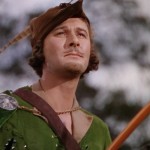
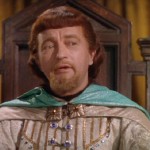
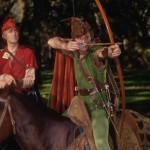
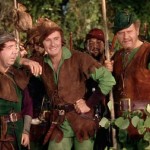
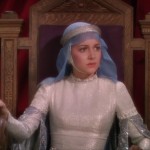
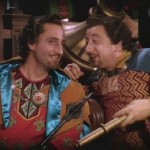
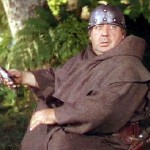
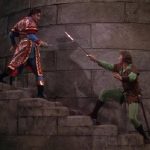
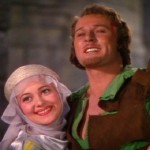
I love this film, among the other Flynn movies of that era. I know so many of the special lines by heart, especially Olivia’s in front of Claude Raines in the tribunal. xo